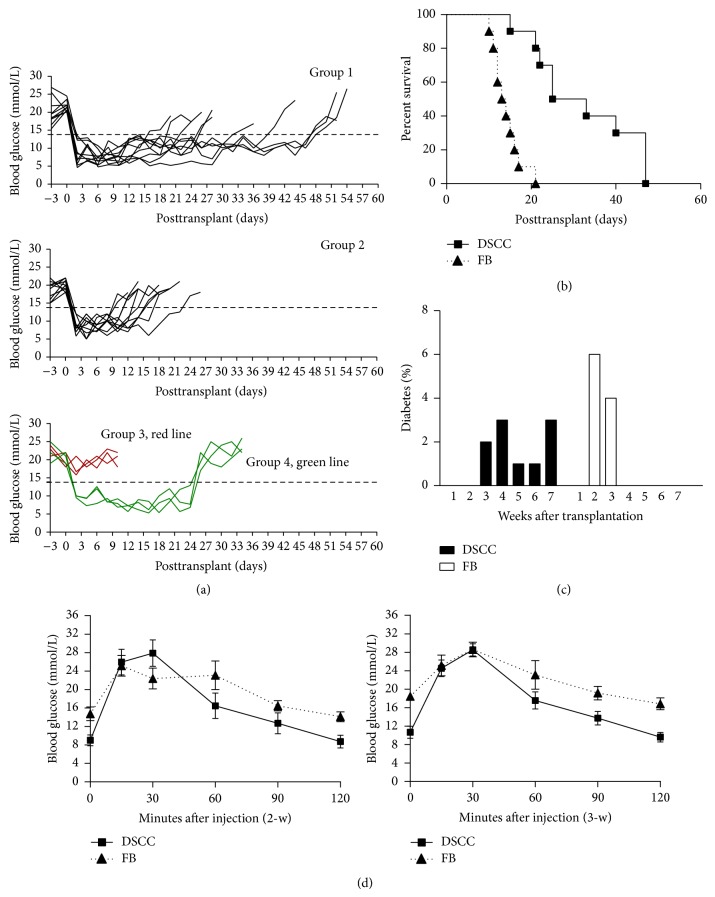Figure 2.
DSCC prolongs mouse islet allograft survival. (a) Blood glucose level in B6 mice before and after transplantation. Diabetes was induced by a single injection of streptozotocin in B6 mice. Mice in groups 1, 2, and 4 returned to normal glucose levels after transplantation with 400 islets from Balb/c donors in a collagen matrix with DSCC (groups 1 and 4) or FB (group 2) cells. Mice in group 3 (DSCC only) did not normalize high glucose after transplantation (red line). (b) Significantly prolonged euglycemia in diabetic B6 mice transplanted with DSCC and islets (black squares) was observed compared to that in mice with FB and islets (black triangles) (n = 10, mean 32.2 versus 14.1 days, resp.). Kaplan-Meier graft survival curve is derived from blood glucose data, with P < 0.001 by the log-rank test. (c) Distribution of developing graft failure after transplantation is shown in (c). y-axis shows the numbers of mice that developed diabetes after transplantation. One week = day 1 to 7; 2 weeks = day 8 to 14; 3 weeks = day 15 to 21; 4 weeks = day 22 to 28; 5 weeks = day 23 to 35; 6 weeks = day 36 to 42; and 7 weeks = day 43 to 49. (d) Intraperitoneal glucose tolerance test results in B6 recipients transplanted with DSCC and islets (n = 6) 2 and 3 weeks after transplant (black squares) were compared to the FB and islets transplanted group (n = 6) (black triangles). Data are expressed as means ± SE; a better response was found at both time points.

